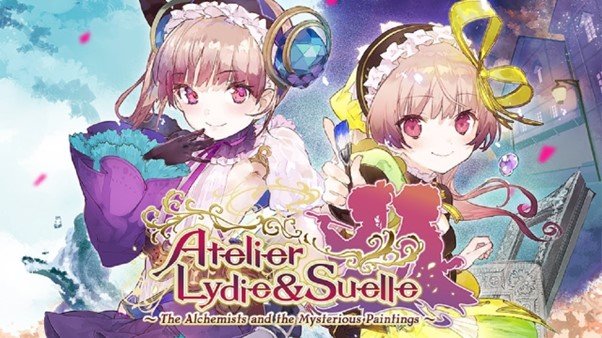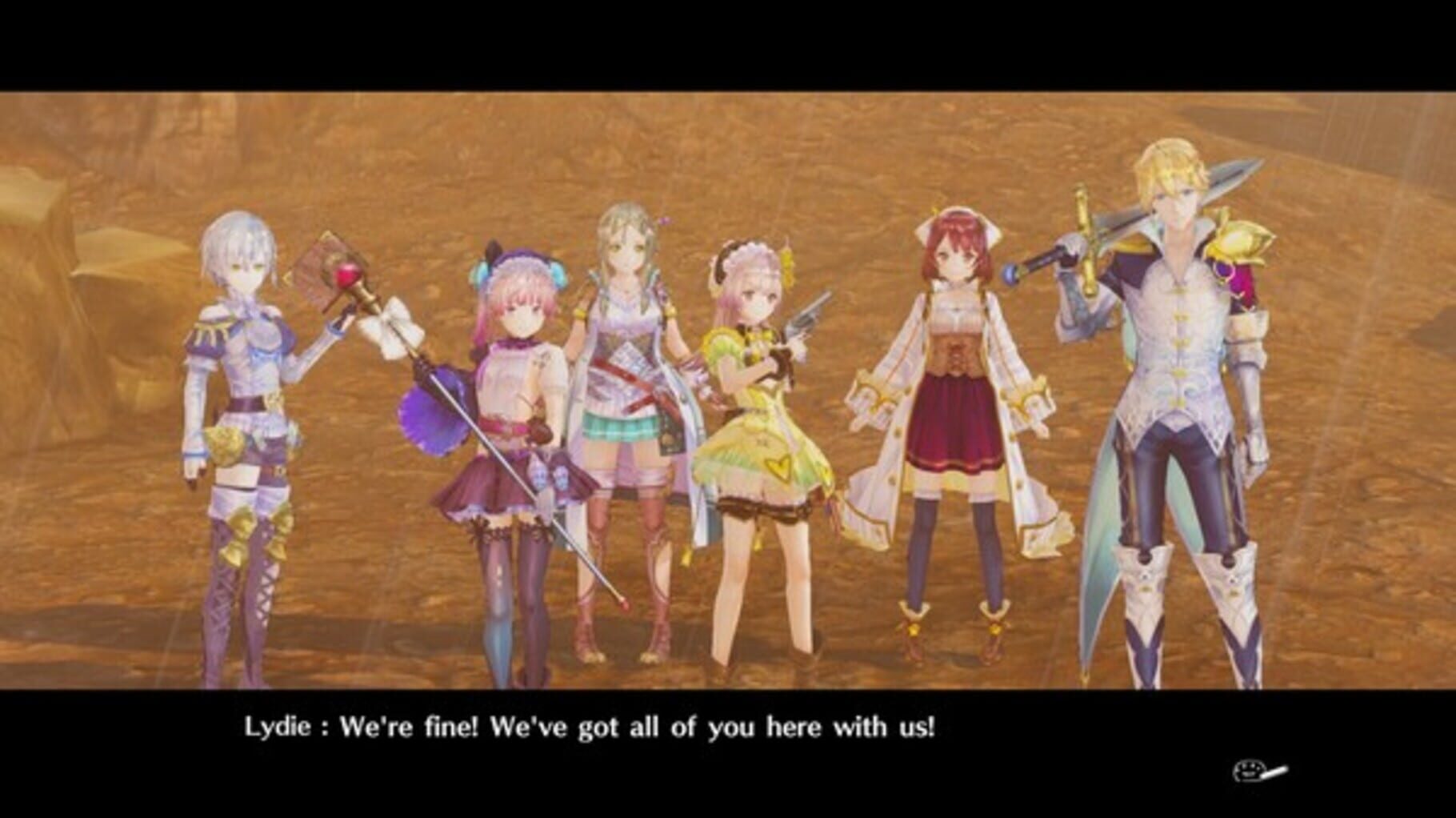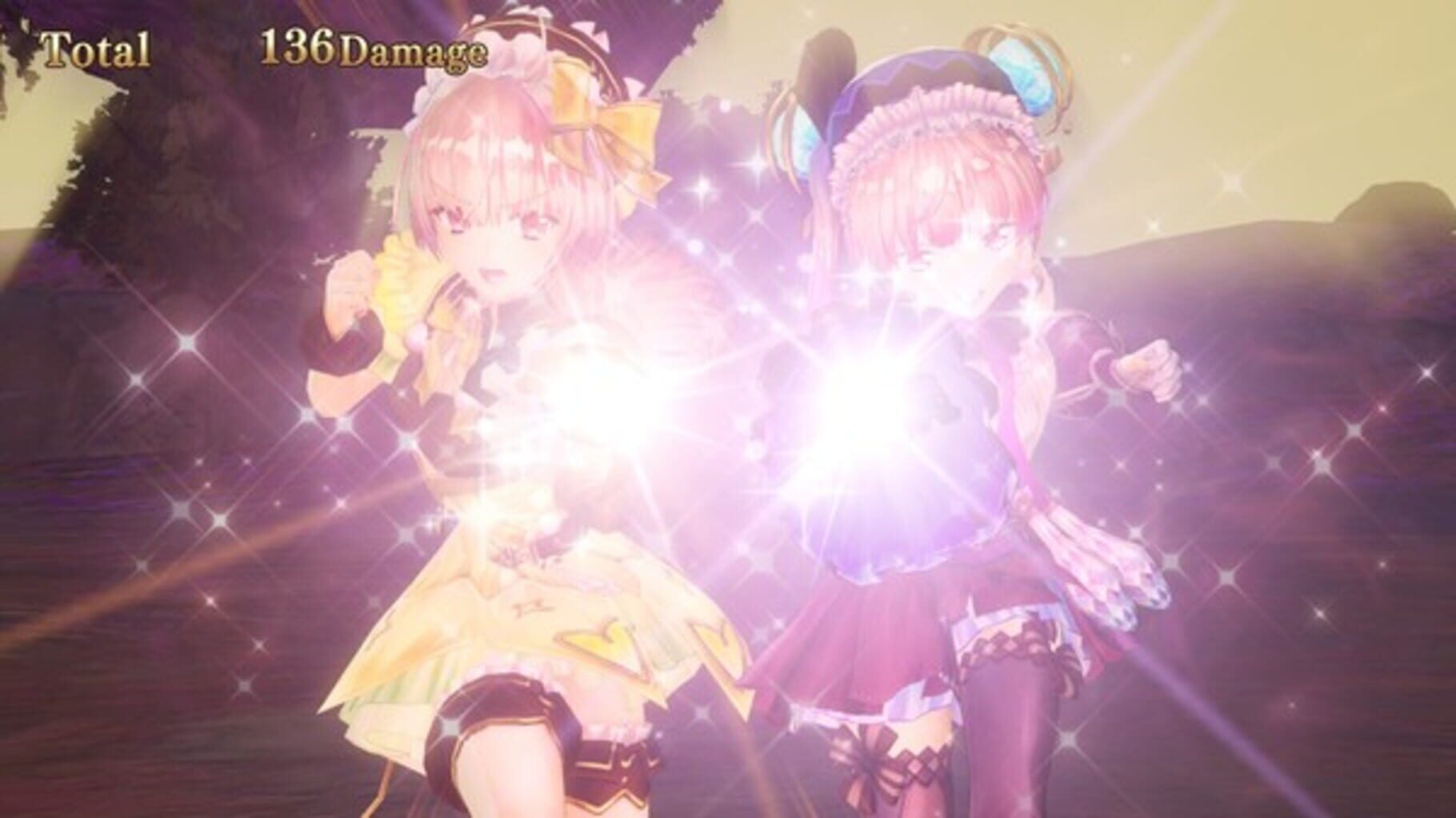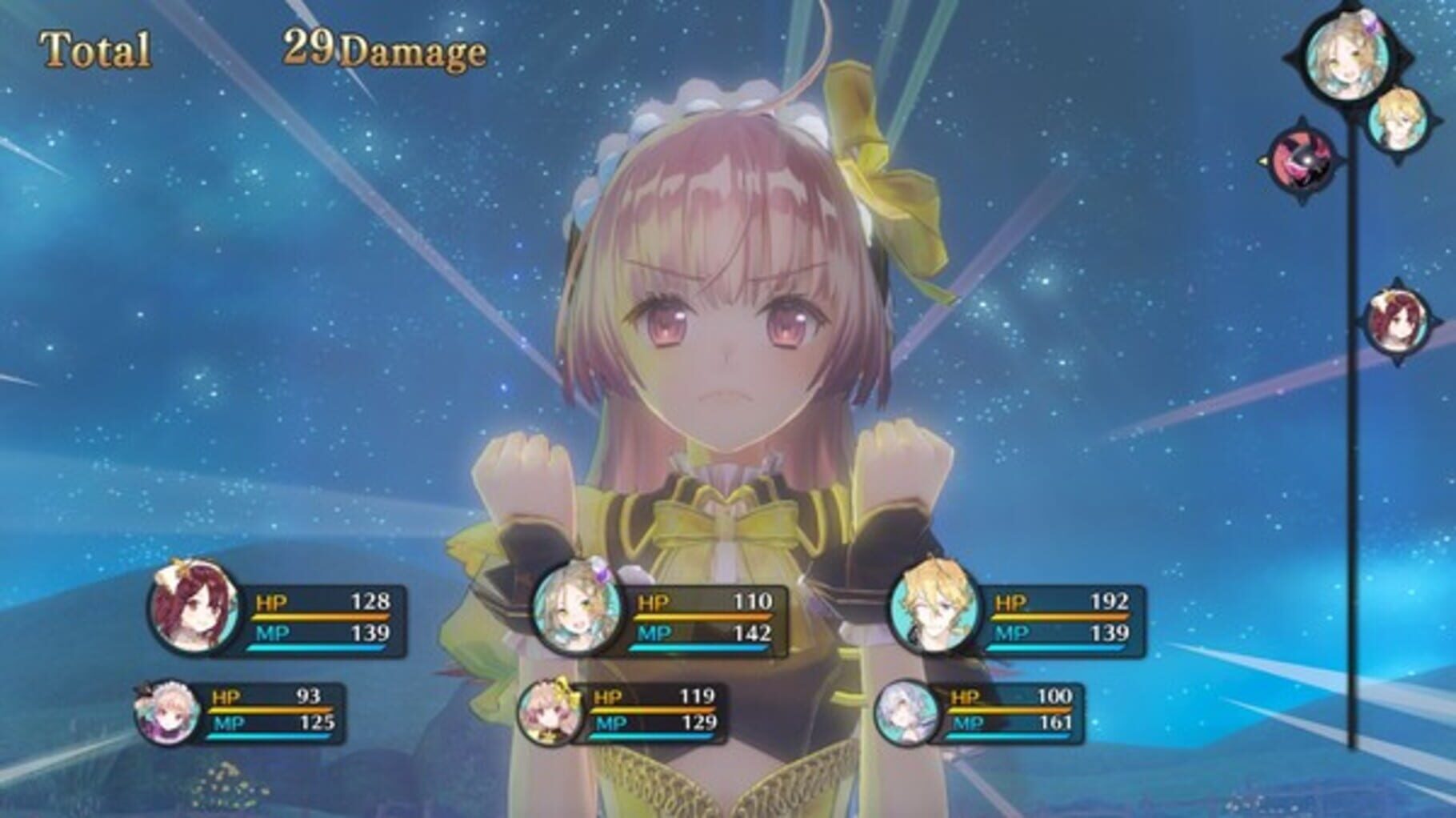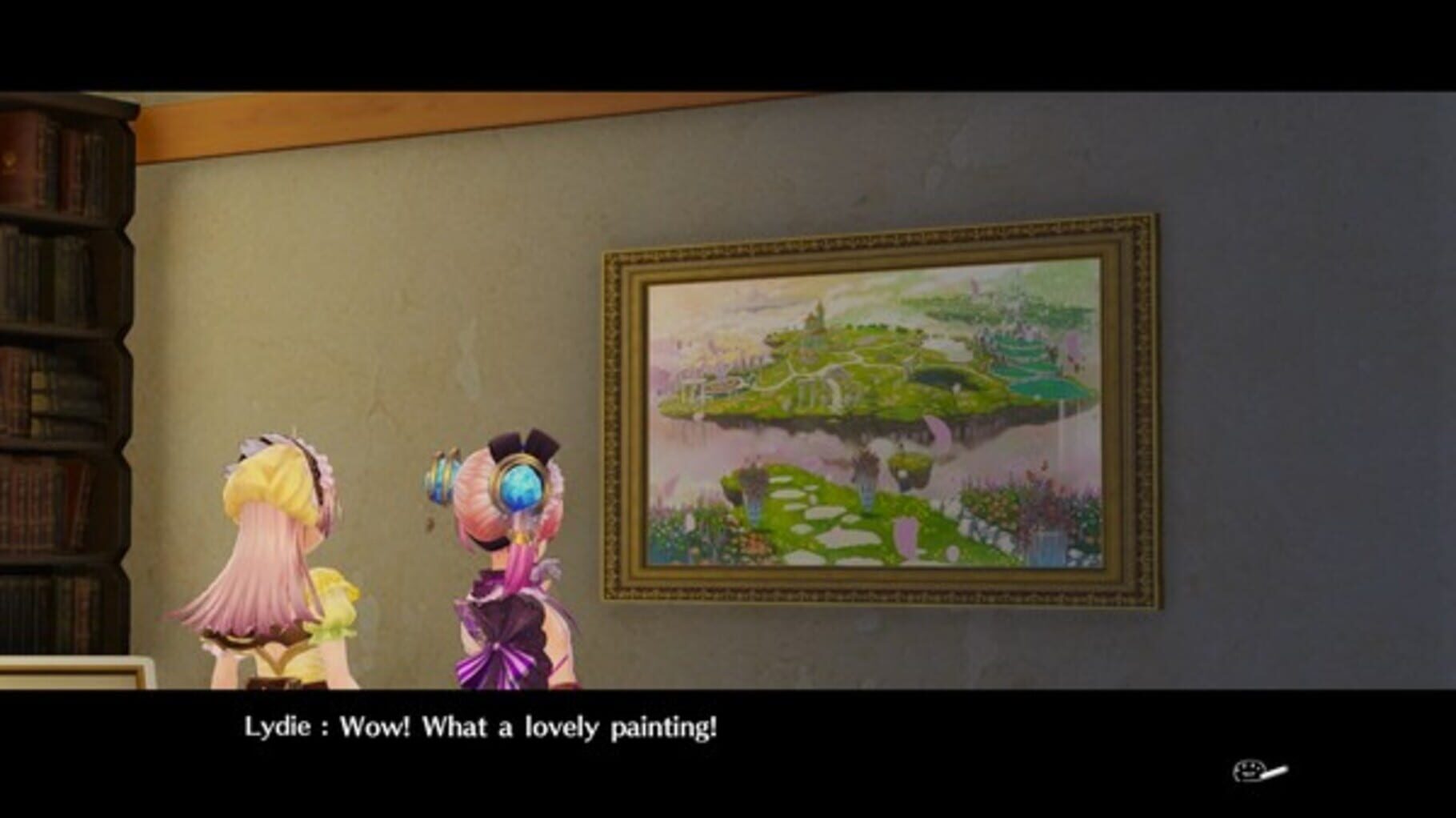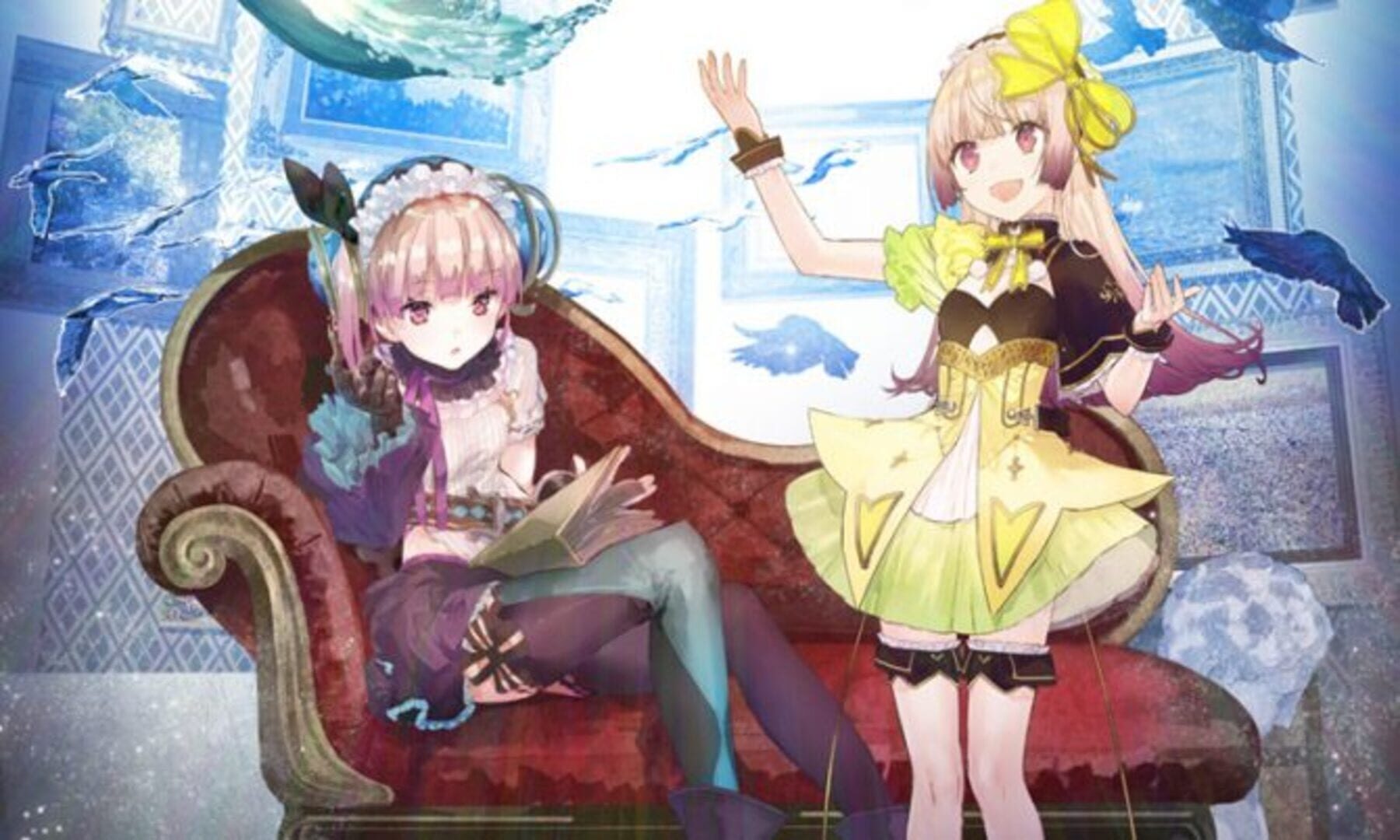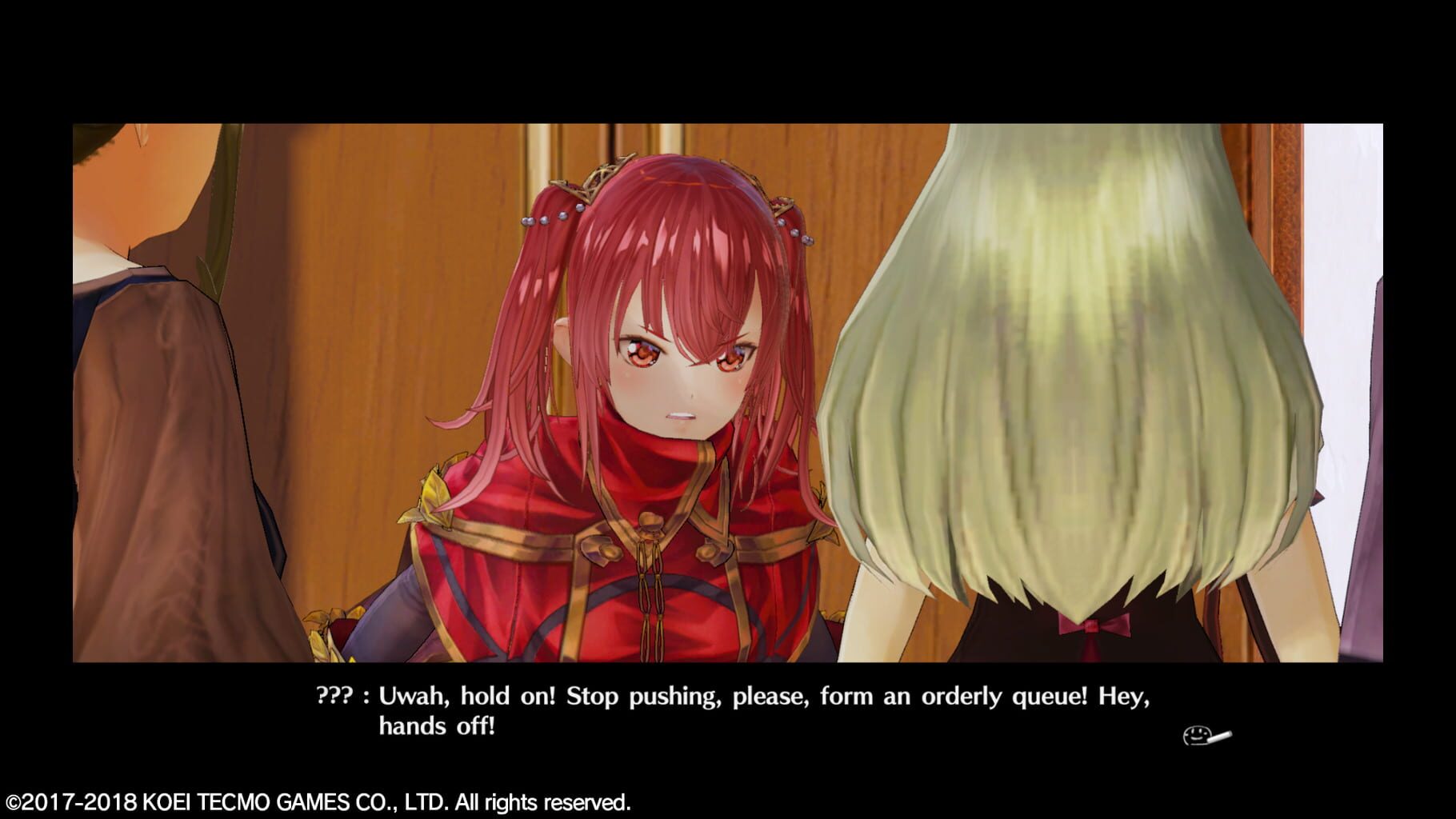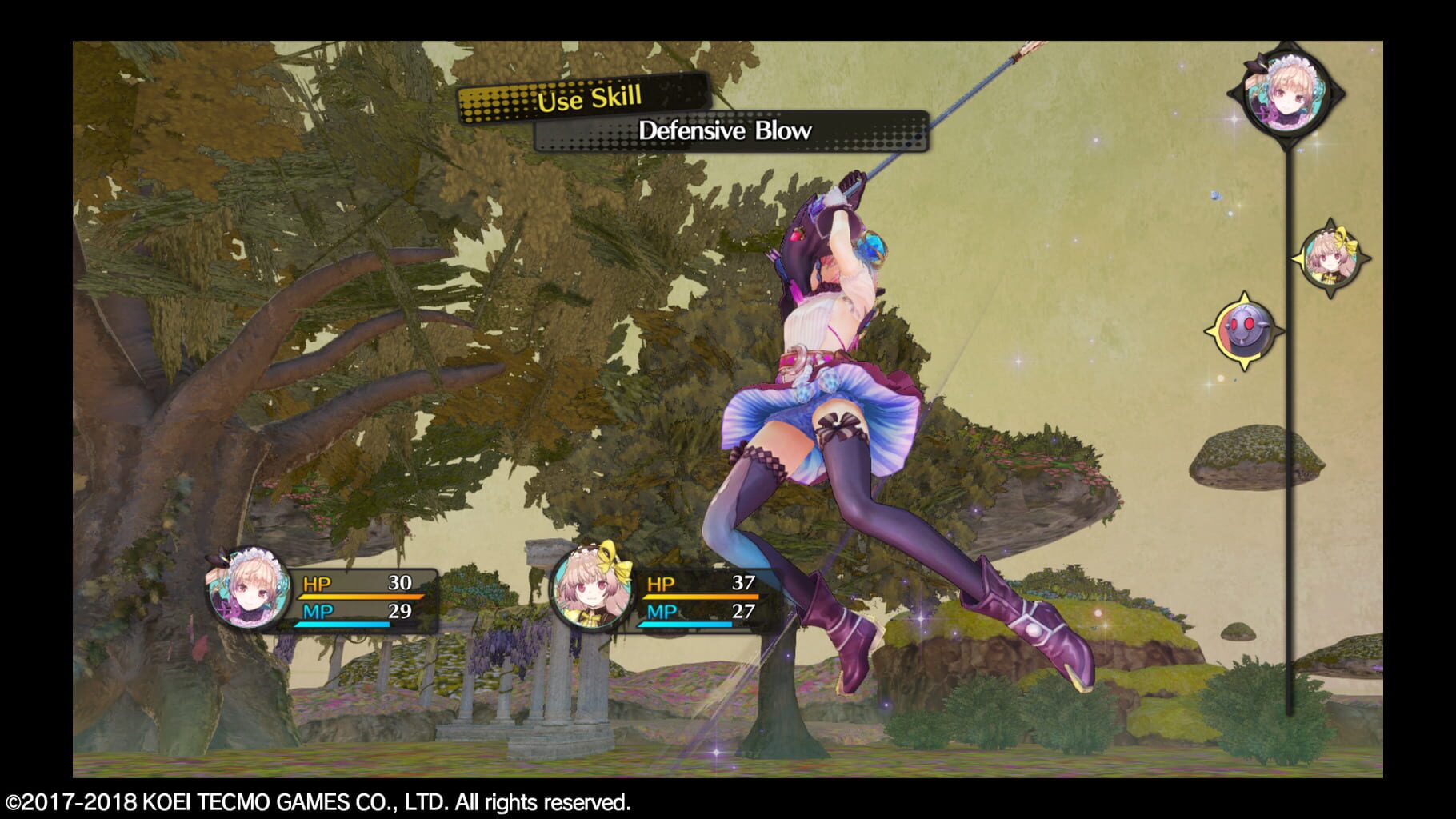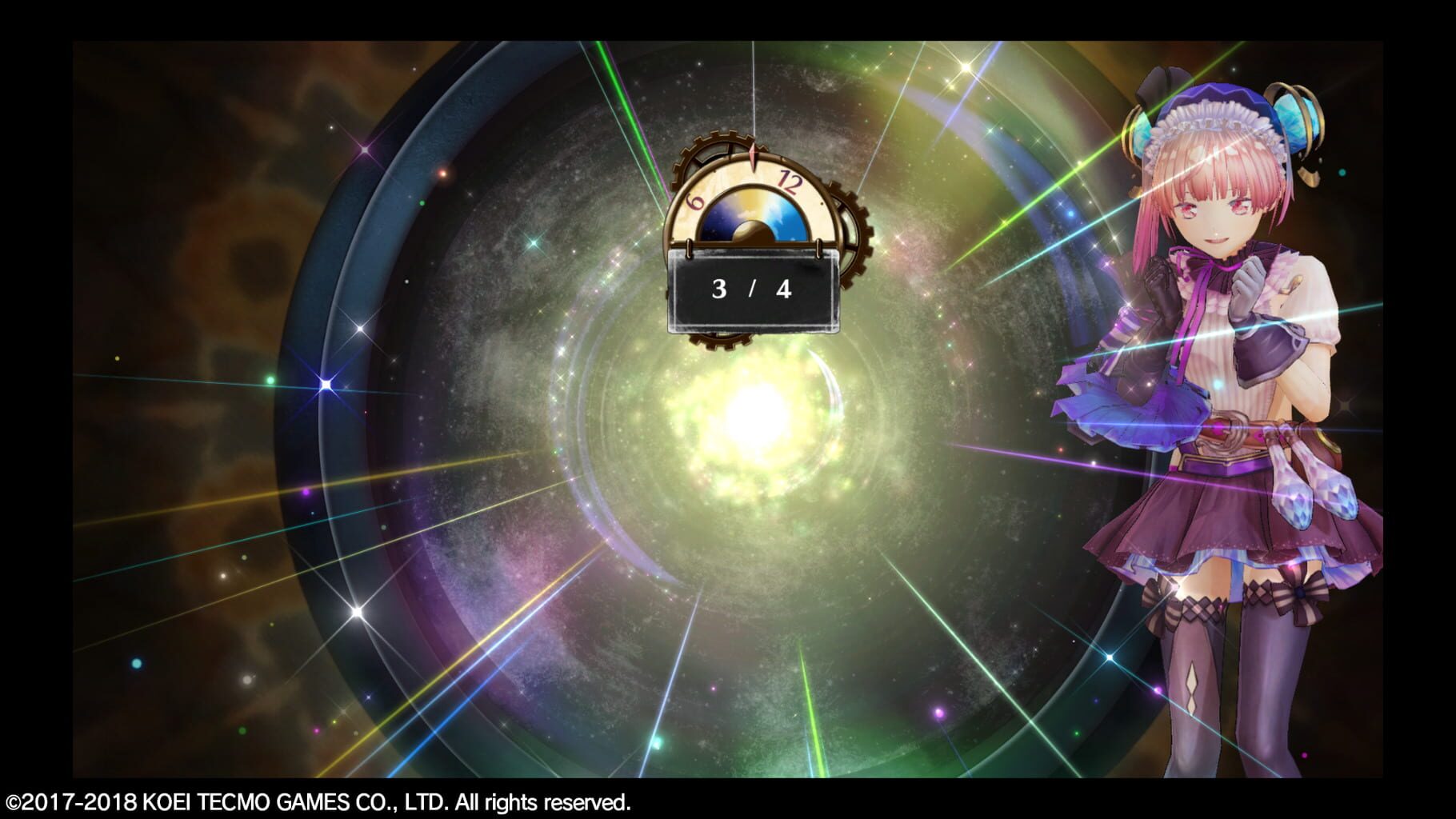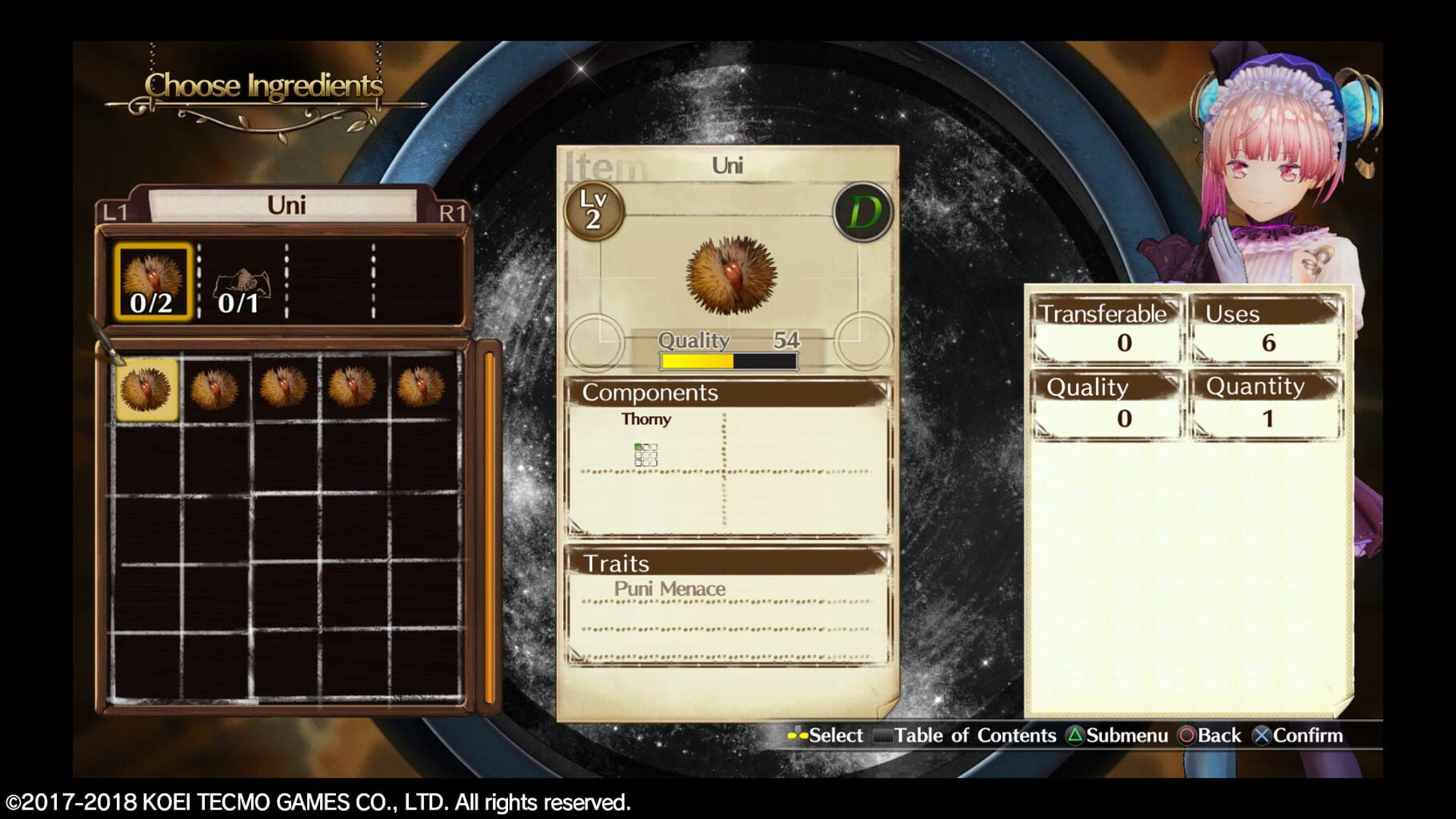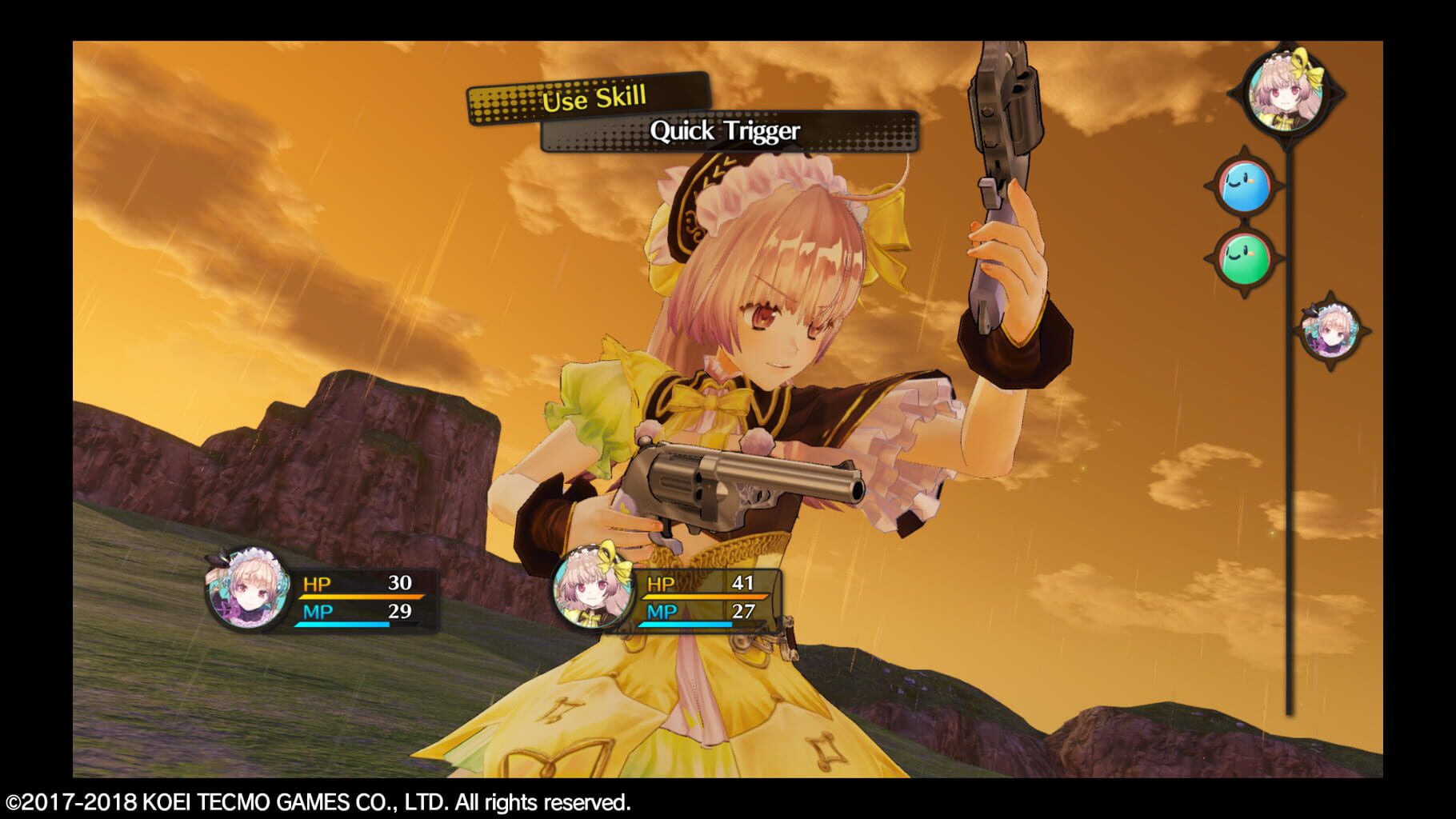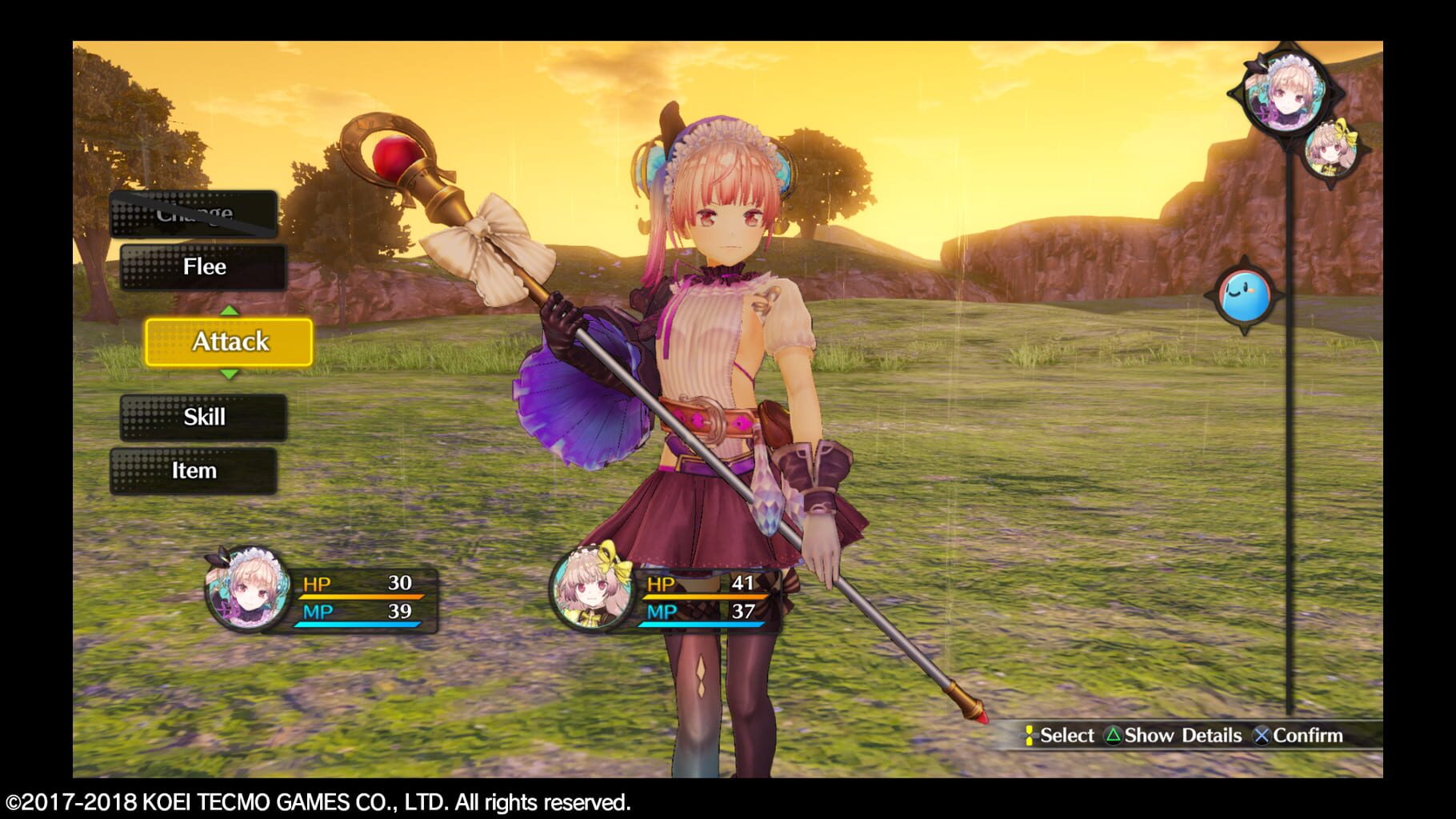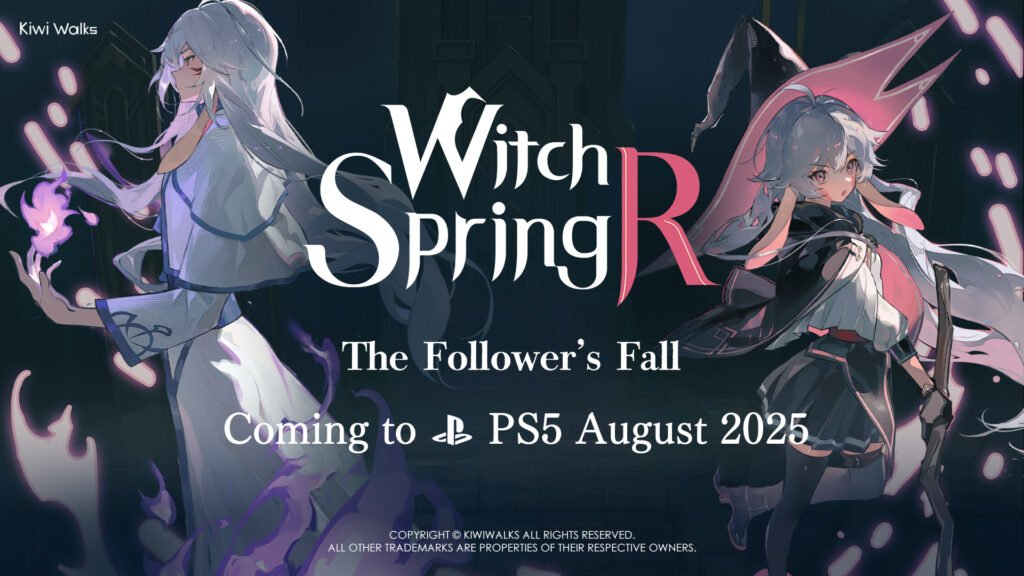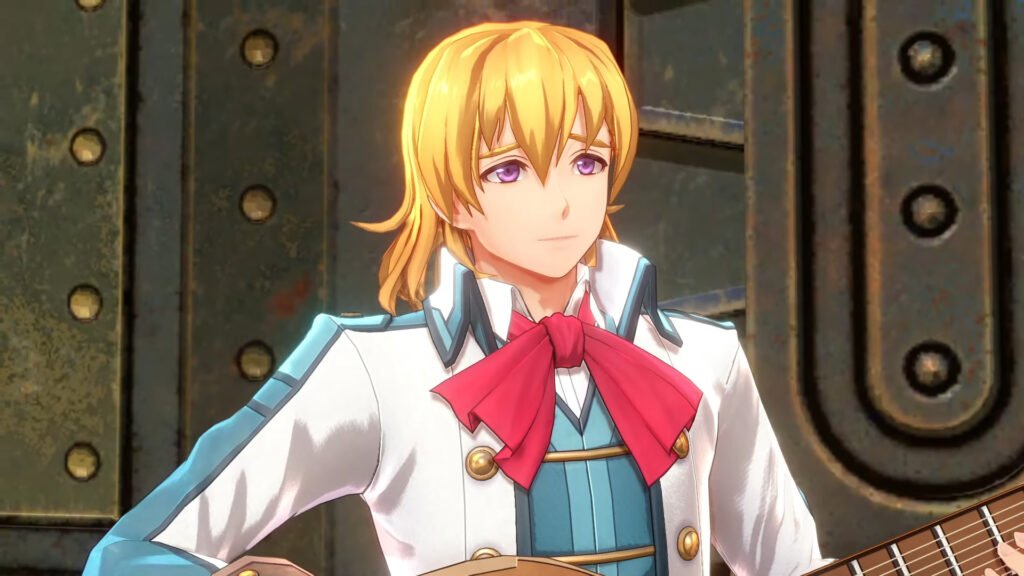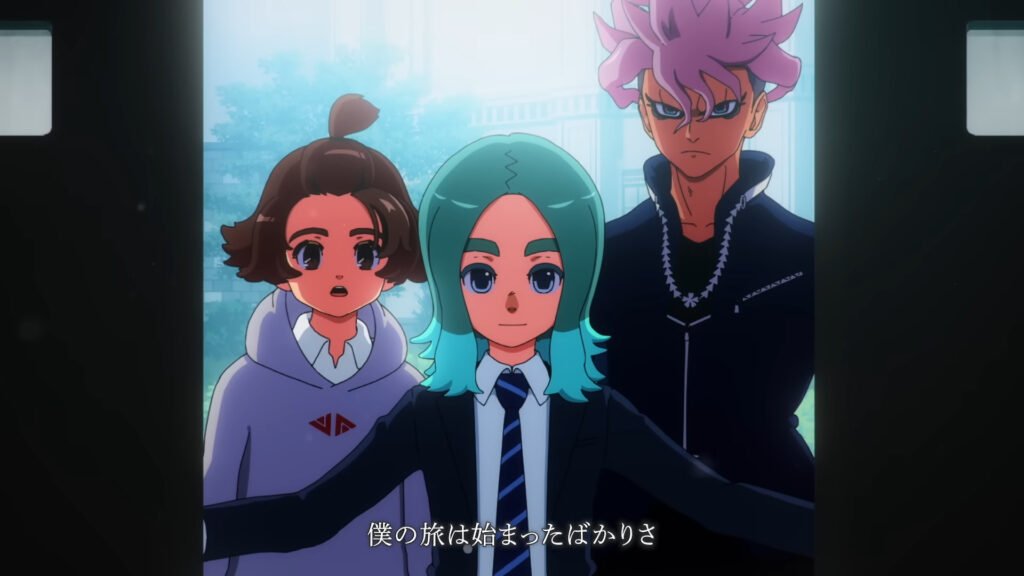Regardless of the outcome, today’s review comes from a place of love. You see, despite my concerns about the Atelier series and its undesirable tweaks over the last decade, there are elements here that I like a lot, elements that highlight each game’s potential, such as fluid, traditional, turn-based combat and a regular ‘coming of age‘ theme in the storylines.
These elements frequently grab my attention and draw me back to the franchise to see how the games evolve with each installment, yet my expectations and what I receive differ greatly time and time again. It’s rather disheartening. A little background before we begin…
On This Page
Introduction
I’ve struggled with the Atelier series for quite some time. The timescale mechanic usually requires the player to complete a series of tasks and/or alchemic component fusions within a set time limit, a gameplay requirement not exactly suited for the average JRPG player who enjoys exploring the world they find themselves in.
Plus, when component harvesting is such a major factor, limiting one’s time to do this seems like an unreasonable punishment. Atelier Sophie changed this. Time limits may apply to optional side-quests but not the main story, leaving the player feeling more in control of their experience.
However, Sophie had a fair few progression issues since it wasn’t immediately apparent whether the task you were working on was part of the main story or optional content, not that it ultimately mattered for my playthrough. As I worked through my Sophie quest list, I mingled with new and familiar characters, raised my Atelier rank and thus my social status, and made a few gold in the process.
That’s when it happened. I ran out of things to do. I was twenty hours into the game, had a glowing reputation, my quest list exhausted, and I hadn’t even encountered the secondary protagonist yet. After a little wandering around, I decided it was time to call it a day. I had played myself into a corner and had nothing left to progress with, a game-breaker I hadn’t experienced since the equally pretty yet broken Omega Quintet.
That’s where Atelier Lydie and Suelle come in. After Atelier Firis mixed up the formula and returned the scary time limits and even introduced open-world gameplay, Lydie and Suelle had the potential to fix my Gust JRPG craving after the underappreciated masterpiece that was Blue Reflection (still a better high school sim JRPG than Persona 5 in my opinion) but can it live up to expectations?
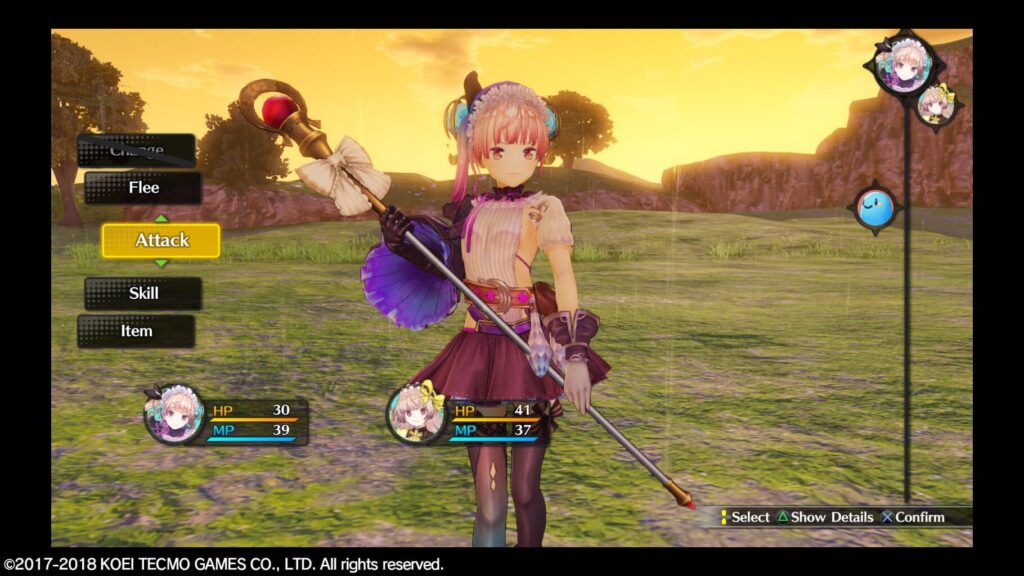
Story
Following the death of their mother, Lydie and Suelle (Sue for short) live in the ‘care’ of a negligent father who rather enjoys the idea of being a stereotypical ‘starving artist’ and spends his days locked up in the basement painting and spending what little money he does make on art supplies, rather than much-needed food. This leaves the girls very much fending for themselves as they try to revive their family’s underused alchemy lab and thus run their own Atelier in order to make a living.
This is where the girls’ internal conflict comes into play as they’re forced into work, yet this doesn’t seem so far-fetched when the world in which they live seems to have forgotten such concepts as ‘school’. The girls also occasionally banter about starting dating and romantic scenarios yet shun the first male character who shows any interest in them. That’s just one example of how bitchy the girls can be.
There’s not much more to the overarching story than making an honest living, which feels rather low-key when compared to so many of the more epic JRPG adventures available. There is another gimmick that does offer a twist, which is Lydie and Sue’s ability to enter paintings in order to explore the fantasy pocket dimensions within. Doing so might just reveal a clue as to what really happened to their missing mother.
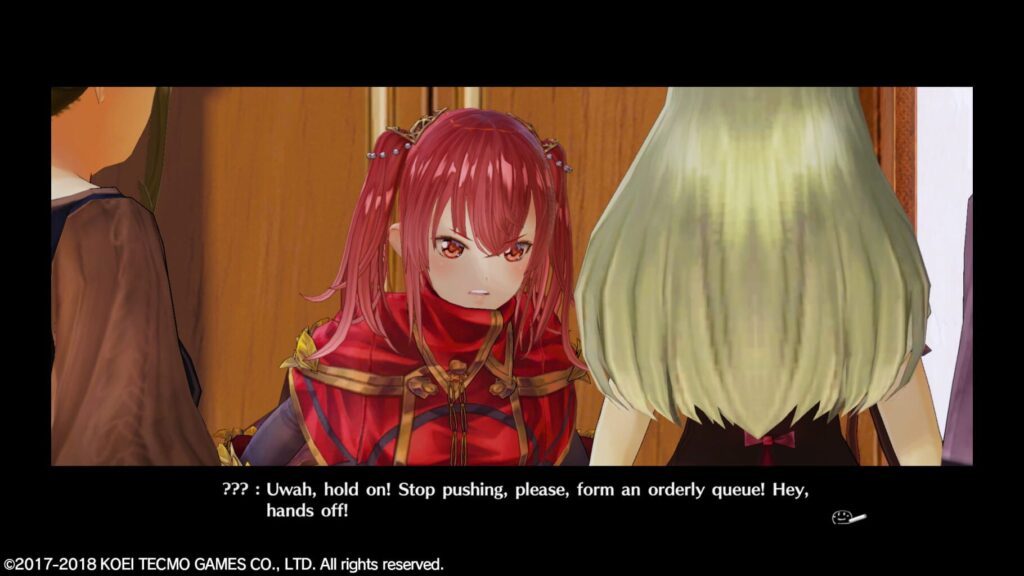
Gameplay
An excessive time investment in item synthesis, against my better judgment, is just something you’ll have to make your peace with since it’s a core mechanic of the series. It’s always at the heart of the quests you’ll be completing. Fortunately, the synthesis has been revised compared to the previous game’s system.
For example, rather than crafting a new alchemy cauldron or increasing one’s proficiency in certain materials, players can rotate between items and place them wherever they please. Catalysts make a return, which allows players a higher degree of freedom over the items they create. This synthesis system is one of the simplest yet still more interactive of the series.
Atelier Lydie & Suelle‘s combat is also refreshingly simple. Gust has created many exciting and flashy combat systems in the past, but Atelier Lydie & Suelle‘s is stripped down and streamlined. Your alchemists can use items while your guardians do most of the heavy lifting via melee or ranged combat.
Since Atelier Lydie & Suelle has two alchemists to start with, they each have their own playstyle. Lydie is more akin to the traditional Atelier protagonist, who uses a staff as her weapon and has access to all items in battle. Sue has a more limited selection of items she can use, yet she’s a much more offensive fighter due to her twin pistols.
You can pair characters up as an attacker and a supporter. When the attacker fulfills one of the supporter’s conditions, a follow-up attack or defensive move may be performed, leading to powerful attacks that finish off your foe, defensive barriers, the area heals, or even chaotic damage chains.
The combat in Atelier Lydie & Suelle is fun, strategic, flashy, and exciting. It makes for a welcome break from the excessive crafting and item harvesting, which are mandatory grinds required to fulfill quests and errands that play a part in progressing the story.
There are three different sets of quests you’ll be completing this time: story quests, which require interacting with certain characters and creating specific items, side-quests which are based on killing specified numbers of selected enemies or finding and creating certain items; or challenges, which are a combination of elements from the other two.
Work your way through these lists, and, again, you’ll soon run out of things to do unless you want to repeat side-quests. With a decent social ranking and only a handful of the game’s character roster officially joining my party, I had exhausted all questlines after around 10 hours and had little else to do other than potter around in the hope I might trigger the next story event. I didn’t stick around much longer than that.
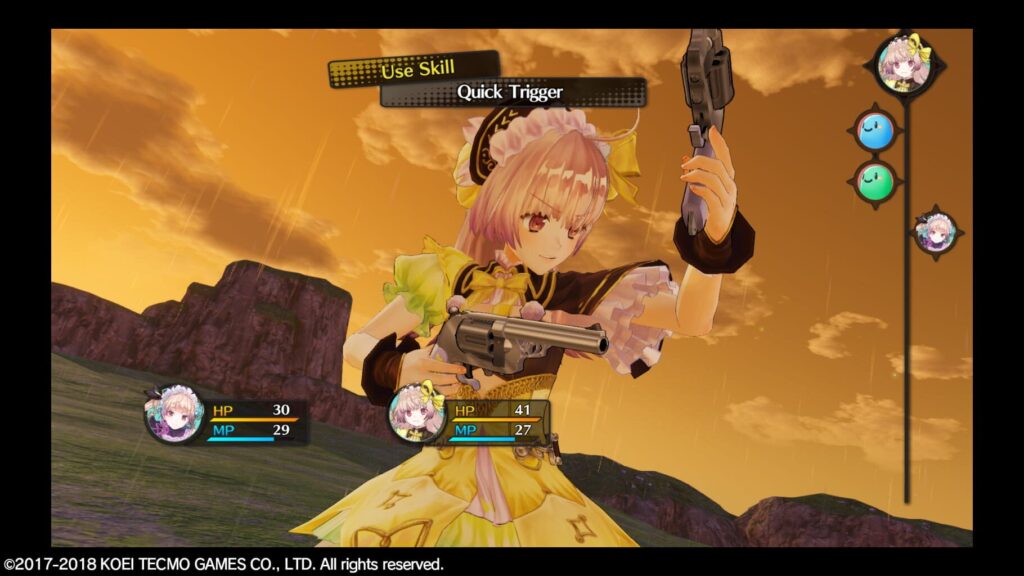
Graphics/Sound
Originally planned as Vita exclusive, it does not excuse the sloppy graphical performance of this PS4 port. Looking notably worse than the previous installments of the series, some unforgivably blurry graphical textures and occasional slowdown worsening the already sluggish frame rate make for an overall unpleasant performance.
The surprise absence of English voice-acting is also a massive disappointment when considering the charming banter and anime veteran actor expertise provided in past games. The respectable enough music doesn’t redeem this either. It’s a real shame.
The surprise absence of English voice-acting is also a massive disappointment
Gary Green
Conclusion
So, does Lydie and Suelle improve on the Sophie formula I mentioned earlier? No, it makes the exact same mistakes, and sadly a few others, too. The broken gameplay elements aren’t the only way Lydie and Sue will ‘challenge’ you, as I found myself struggling with the titular twin sisters.
Lydie and Sue suffer from a sort of self-conflict where they seem at war with themselves regarding who they are, specifically whether they are adults or children, perhaps not so alien a concept for 14-year-old girls, but one that’s told with such awkward extremes in this setting.
The girls, despite their age, aren’t afraid of showing some skin as Lydie constantly flaunts her developing side-boob with her Gothic Lolita ensemble and Sue is perfectly happy wearing a low-cut party dress while exploring the world. As odd as that may sound, the fact a 14-year-old girl walks around with a pair of firearms is perhaps the bigger eye-opener.
I could go on, and whilst the odds are that Lydie and Sue are more adult than child, a Western audience may not agree despite the contributions they make. I’m sure the game may even settle this debate with more certainty. It may even answer what their father’s endgame is, but I just don’t plan on sticking around in a broken game long enough to find out.
Add together the above-mentioned flaws, and we’ve got a really unimpressive game on our hands. The raw potential and solid gameplay are there but sadly hidden behind the lazy presentation and terrible progression issues. Atelier Lydie and Suelle need a lot more work to make it feel anything close to finished.
Joys
- More of the same for Atelier fans
- The potential is there for a decent story
Cons
- Sloppy visuals
- No English voice acting
- Broken progression
